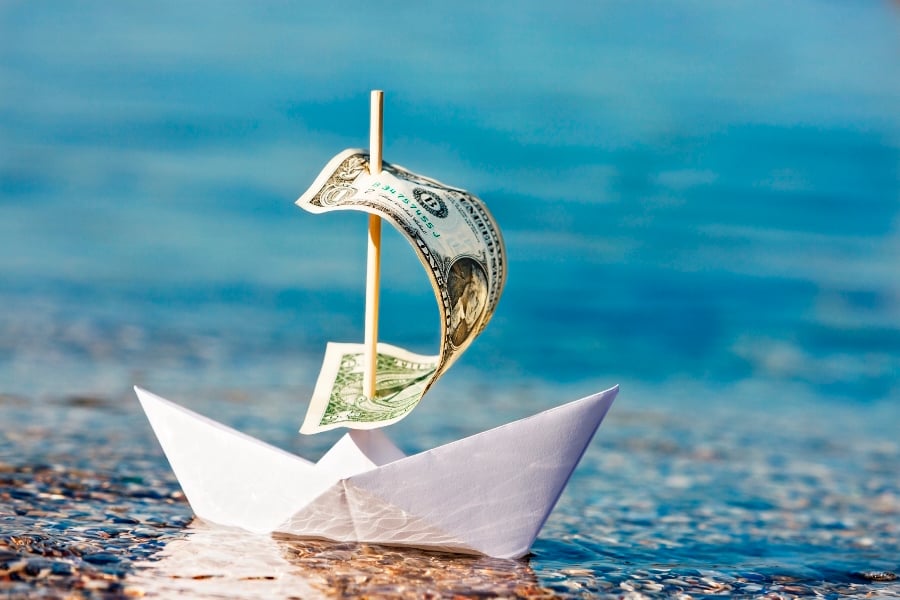

With the historic 11-year bull market now officially over, actively managed funds should be licking their chops at the opportunity to stand out in the market pullback by picking winners from the wreckage.
That’s the theory and the argument proponents of active management often cite when faced with the challenge of competing against dirt-cheap index funds during a bull market.
In practice, since the COVID-19 virus started wreaking havoc on the global financial markets, active-management performance has been varied at best, according to Morningstar analyst Jeffrey Ptak.
From Feb. 20 through March 16, when the S&P 500 Index experienced a 29.3% decline, 42% of all active funds tracked by Morningstar outperformed their respective indexes.
That is slightly worse than the 44% of funds that beat their benchmarks during the period from Dec. 24, 2018 through February 19, 2020, representing the most
recent trough-to-peak rally period.
A deeper dive into the data show some extreme disparity.
For example, 52% of active U.S. equity funds beat their benchmarks during the recent downturn, compared to about 29% that beat their benchmarks during the rally ending Feb. 19.
Then there’s the other extreme of international equity funds, which saw 30% beat their benchmarks during the recent downturn, and 61% beat their benchmarks during the rally leading up to the downturn.
Active taxable bond funds also fell during the recent pullback with just 21% beating their benchmarks, compared to 47% during the market rally.
“It’s a mixed picture at best for those investors that were holding out for active funds to save their bacon during the downturn,” said Mr. Ptak.
Two fund categories where active managers appear to be earning their keep are alternative strategies and commodity funds.
During the four-week downturn period studied by Morningstar, 90% of active commodity funds beat their benchmarks, compared to less than 30% during the preceding rally.
Liquid alternative funds, many of which are compared to the S&P 500, also stood out with 85% beating the benchmark during the downturn, compared to just 17% during the rally.
Considering the forecast for a longer-term market pullback, it’s too early to declare the entire universe of active managers winners or losers. But this clearly
represents a real test for an asset management category that has been struggling to stay relevant against a flood of lower-cost index funds.
“In the past, active equity mutual funds have underperformed index-based alternatives, driving advisers to look to ETFs tied to S&P 500 and Russell
2000 indexes,” said Todd Rosenbluth, director of mutual fund and ETF research at CFRA.
“However, if mutual funds are able to justify their premium fee for security selection, advisers might stop pulling money out and stay loyal,” he added.
Coincidently, the timing of the latest major test for active management comes just as the industry is gearing up to roll out the first nontransparent active ETFs, which have been mostly put on hold since the pandemic swept over the financial markets.
“The timing is ideal for portfolio managers to shine given the expected launch of active ETFs,” Mr. Rosenbluth said. “If active management is able to show performance success ahead of a pending launch that will help.”
Pam Holding, co-head of the equity division at Fidelity Investments, can recall periods of market turmoil dating to the 1987 crash and she said each presents its own unique opportunities for active managers.
“This is where we can shine and pick up companies that we think are long term winners,” she said. “From my perspective, every crisis always feels very dark, then you come through it and realize it was an opportunity. That’s what we’re telling our team.”
While market downturns are usually the time for active managers to shine, Mr. Ptak of Morningstar said investors and advisers should still be careful about when and where they transition from passive to active, and back again.
“Our research has found that active funds do tend to succeed in greater numbers during down markets, but the problem is the duration of the up-market periods greatly outnumbers that of the down periods,” he said.
With the average bull market since 1926 lasting 9.1 years and the average bear market lasting just 1.4 years, active funds that excel during down market periods typically have less time to strut their stuff.
This is one of the reasons active funds, in general, tend to outperform less during bear markets than they underperform during bull markets.
“What the means is whatever ground they’re able to gain back during a bear market isn’t sufficient to close the gap created during the bull market,” Mr. Ptak said. “But we’re looking at averages, so you have to identify the fund that will outperform during a bear and you have to know when to do it. I don’t know if it’s exploitable, but there are certain funds that are very committed to avoiding the downside.”

Relationships are key to our business but advisors are often slow to engage in specific activities designed to foster them.

Whichever path you go down, act now while you're still in control.

Pro-bitcoin professionals, however, say the cryptocurrency has ushered in change.

“LPL has evolved significantly over the last decade and still wants to scale up,” says one industry executive.

Survey findings from the Nationwide Retirement Institute offers pearls of planning wisdom from 60- to 65-year-olds, as well as insights into concerns.
Streamline your outreach with Aidentified's AI-driven solutions
This season’s market volatility: Positioning for rate relief, income growth and the AI rebound
